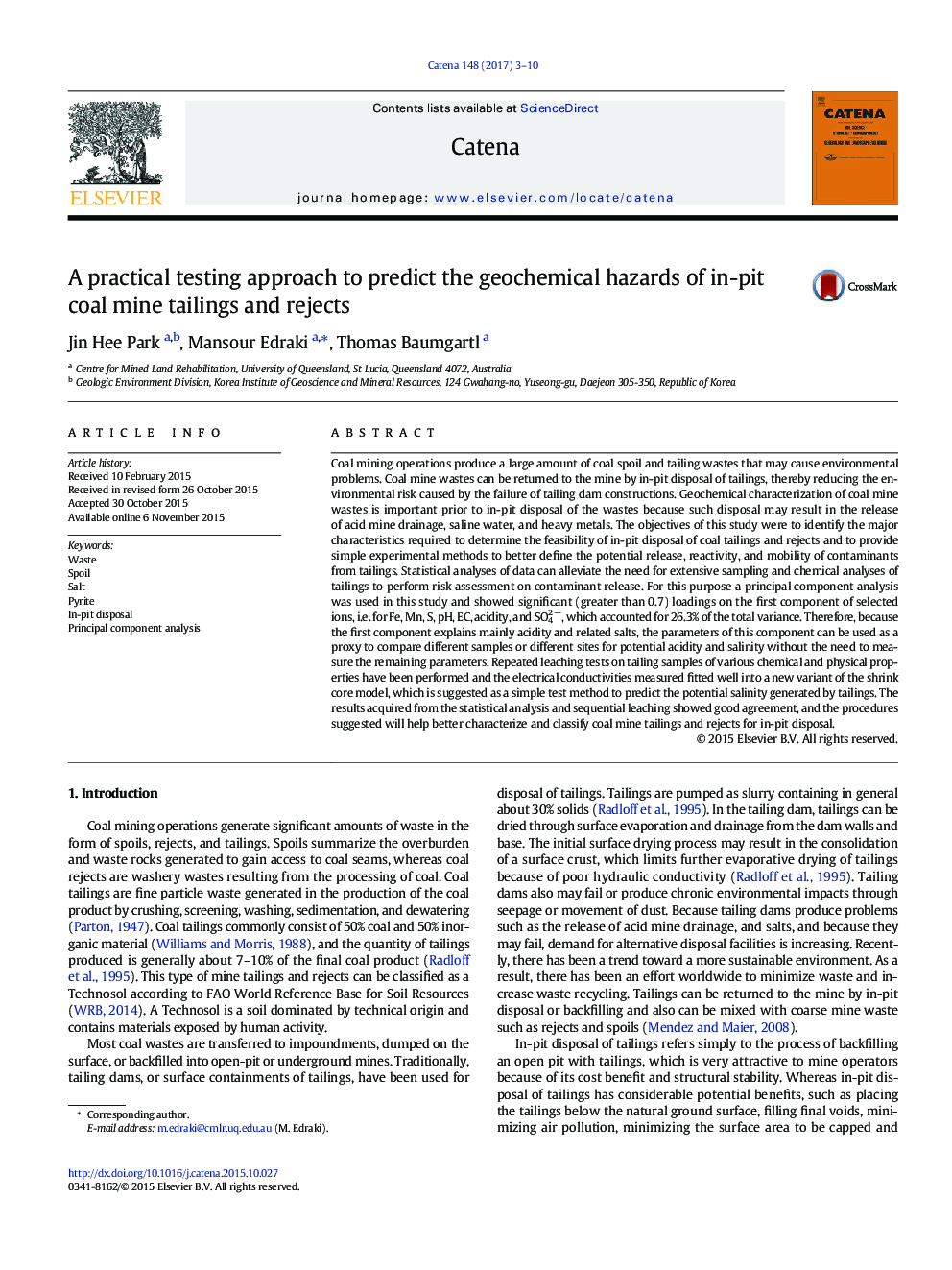| کد مقاله | کد نشریه | سال انتشار | مقاله انگلیسی | نسخه تمام متن |
|---|---|---|---|---|
| 4570806 | 1332076 | 2017 | 8 صفحه PDF | دانلود رایگان |
• The acidity and EC of tailings determine the clustering of samples.
• Repeated leaching of tailings with water was proposed as a simple test method.
• Salt leaching kinetics was well described by a new variant of the shrink core model.
• The experimental design provides useful information for the management of tailings.
Coal mining operations produce a large amount of coal spoil and tailing wastes that may cause environmental problems. Coal mine wastes can be returned to the mine by in-pit disposal of tailings, thereby reducing the environmental risk caused by the failure of tailing dam constructions. Geochemical characterization of coal mine wastes is important prior to in-pit disposal of the wastes because such disposal may result in the release of acid mine drainage, saline water, and heavy metals. The objectives of this study were to identify the major characteristics required to determine the feasibility of in-pit disposal of coal tailings and rejects and to provide simple experimental methods to better define the potential release, reactivity, and mobility of contaminants from tailings. Statistical analyses of data can alleviate the need for extensive sampling and chemical analyses of tailings to perform risk assessment on contaminant release. For this purpose a principal component analysis was used in this study and showed significant (greater than 0.7) loadings on the first component of selected ions, i.e. for Fe, Mn, S, pH, EC, acidity, and SO42 −, which accounted for 26.3% of the total variance. Therefore, because the first component explains mainly acidity and related salts, the parameters of this component can be used as a proxy to compare different samples or different sites for potential acidity and salinity without the need to measure the remaining parameters. Repeated leaching tests on tailing samples of various chemical and physical properties have been performed and the electrical conductivities measured fitted well into a new variant of the shrink core model, which is suggested as a simple test method to predict the potential salinity generated by tailings. The results acquired from the statistical analysis and sequential leaching showed good agreement, and the procedures suggested will help better characterize and classify coal mine tailings and rejects for in-pit disposal.
Journal: CATENA - Volume 148, Part 1, January 2017, Pages 3–10
